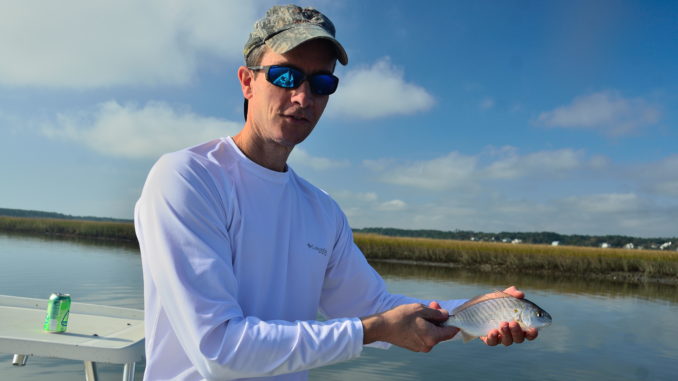
Saltwater panfish make big fall run
The coast of the Carolinas is known for all types of great saltwater fishing, and around Murrells Inlet, S.C., it’s the geographic center for the well-known spot fishery and the peak of the spot run in October, when anglers can find a school of the tasty panfish on their own or locate the local flotilla and find enough room to park your boat.
Dave Altman of Big Dave’s Bait and Tackle in Murrells Inlet keeps his shelves and coolers stocked with bloodworms for fishermen targeting spot. He said the run lasts four to six weeks, and October is the time to go.
“Spots start showing up when the weather cools off towards the end of September,” said Altman (843-651-1915). “North Carolina gets them first. I keep calling people up there every few days during September to figure out when we start getting them.”
Spots move every fall to warmer waters, passing along the Carolina’s coastlines. Along the way, they slide into inlets and estuaries to feed. Murrells Inlet’s estuary is extremely fertile and offers a fantastic place for spots to overnight and fill up before returning on their southern path.
All of the Grand Strand piers — Garden City, Surfside and Springmaid — fill up with anglers who have a cooler-full of spots on their minds, and with good reason. The spots migrate south along the beachfront, and the north side of piers is excellent position to dangle a bloodworm.
Anglers who own boats and have plenty of rods will find the estuary a prime place to get a 50-fish limit in a hurry. Altman said deeper places inside the inlet are best bets.
“All of the Inlet is real good for spots. Some of the more popular places are the mouth of Charlie’s Cut, deep channels in Oaks Creek, across from Marlin Quay Marina, and in the middle of the inlet itself about middle ways down,” he said.
Spots typically travel in large schools and will ride in on the incoming tide, but Altman recommends fishing both stages of the tide.
“Incoming is sometimes better, but a moving tide is most important. They don’t bite well on a slack tide,” he said.
While schools contain mixed sizes of fish, the majority of are smaller during the initial run. It is not until later in the season when the big spots show up.
“The smaller fish show up first, and at the end, the big yellowbellies or the big roe spots show up last,” he said.
Spots eat predominately invertebrates like small mollusks, shrimp, and their favorites, worms.
“Blood worms are by far the best bait for spots,” he said. “All you need is a small, ¼- to 1/2-inch piece; they will eat it every time.”
Double dropper rigs are the gold standard, with No. 5 or No. 6, long-shank hooks.


Be the first to comment